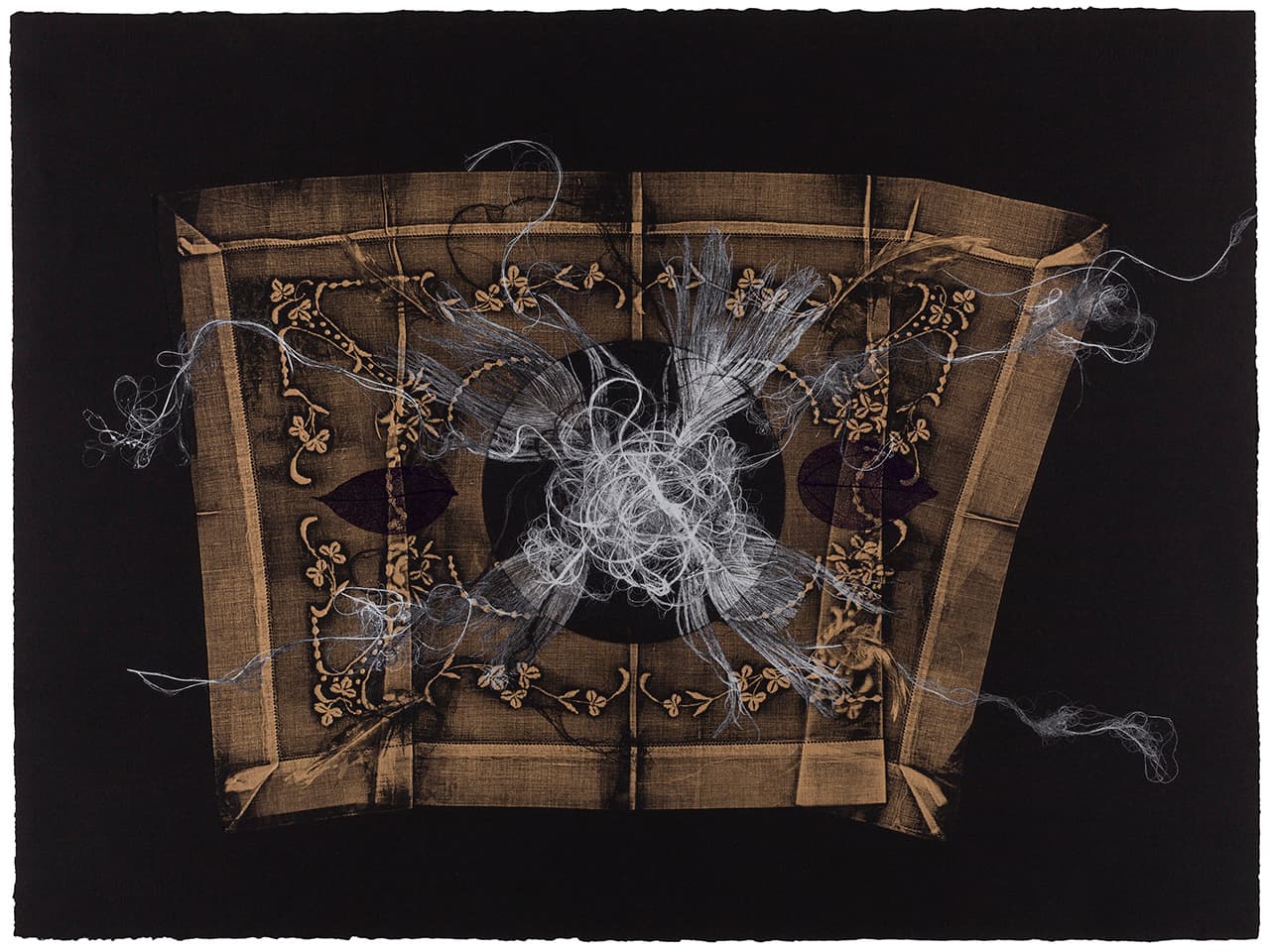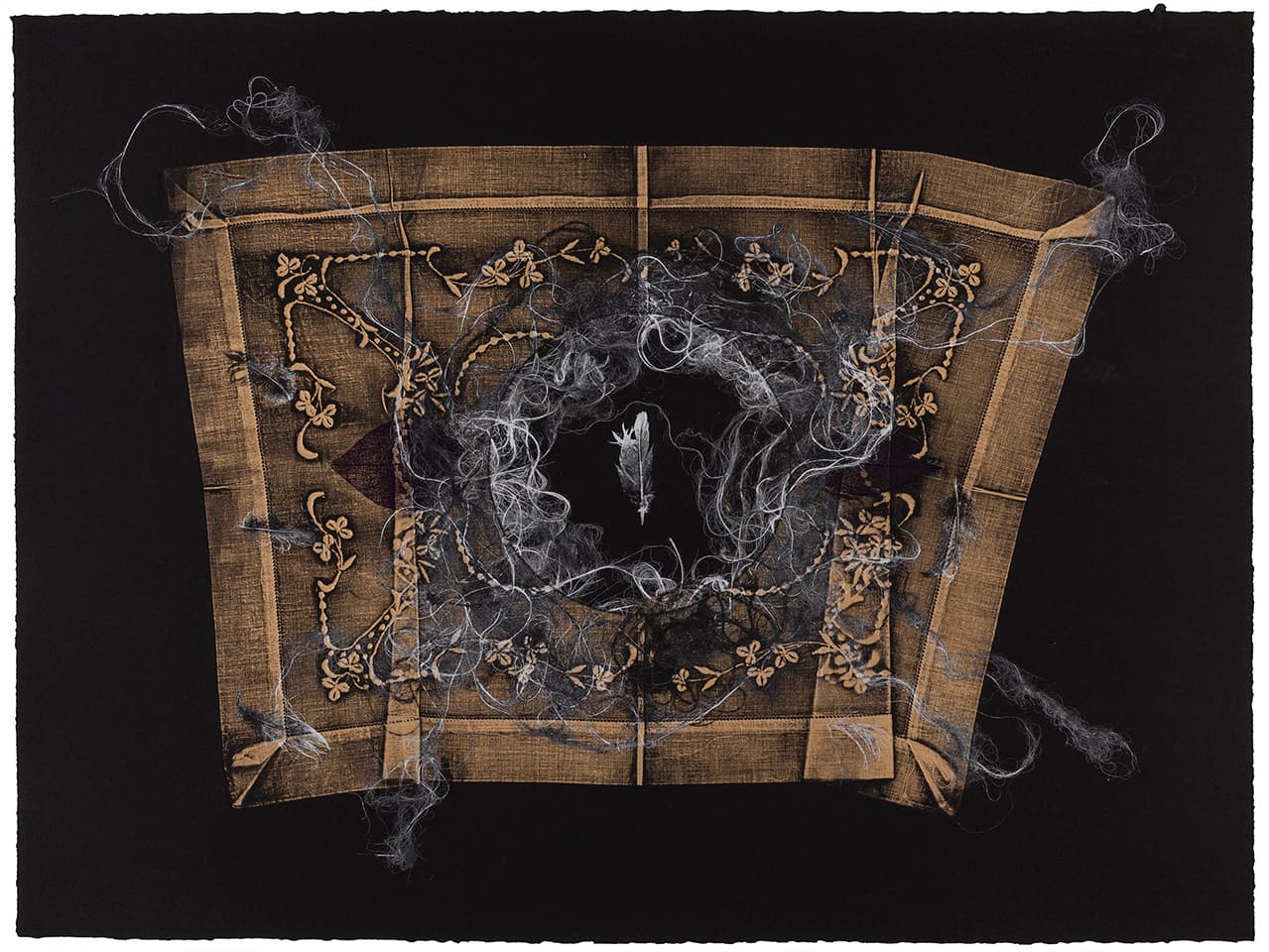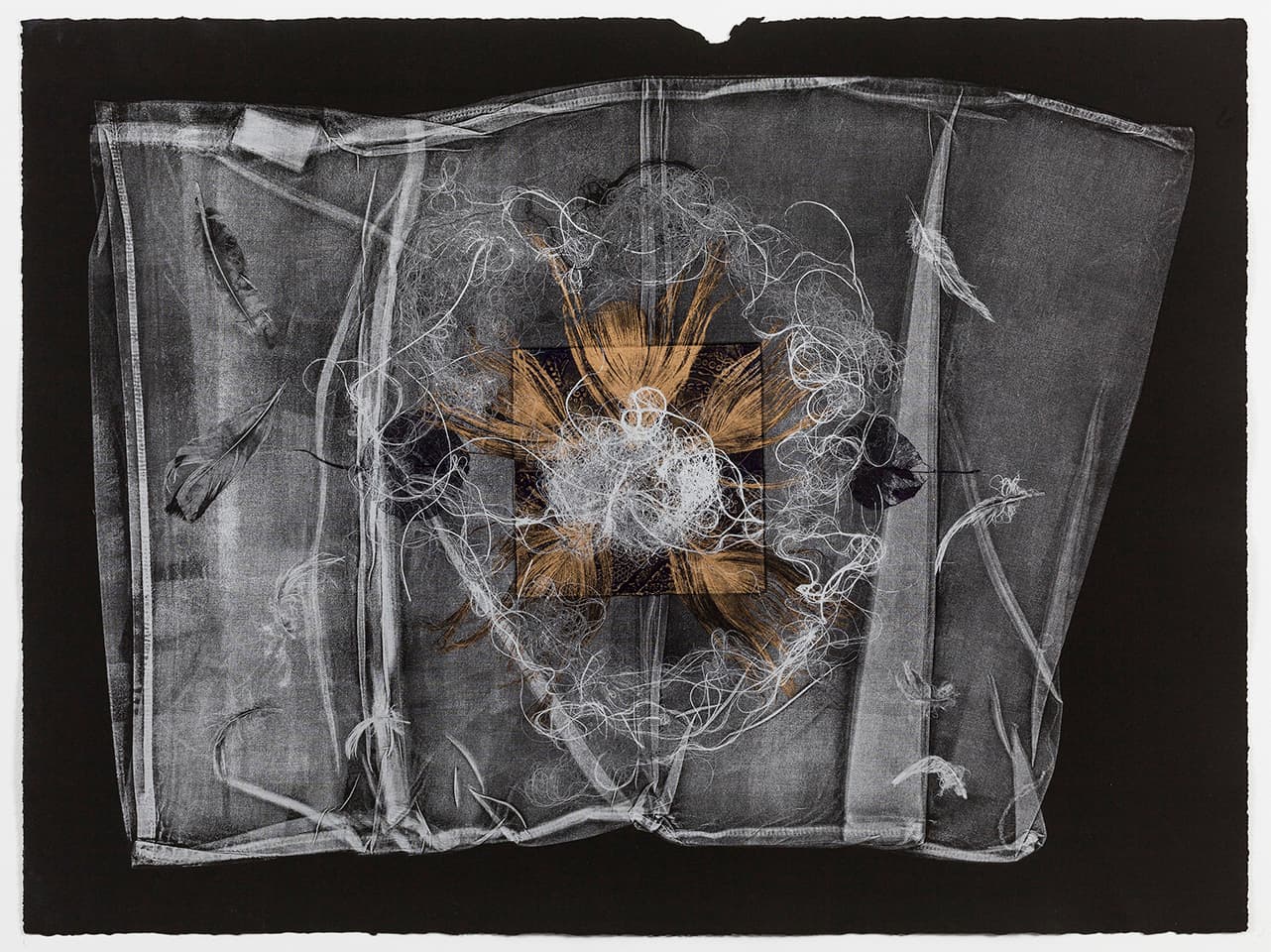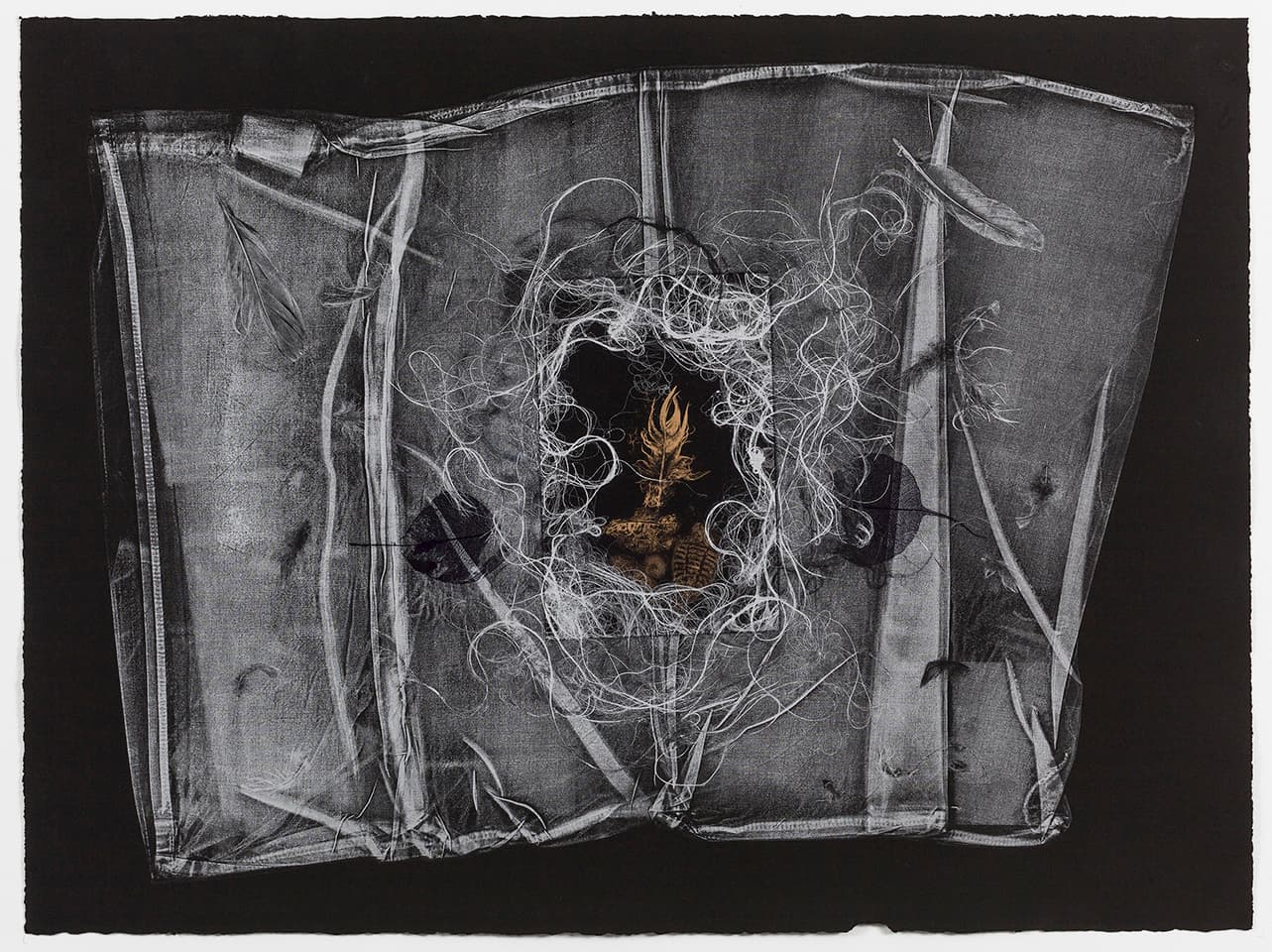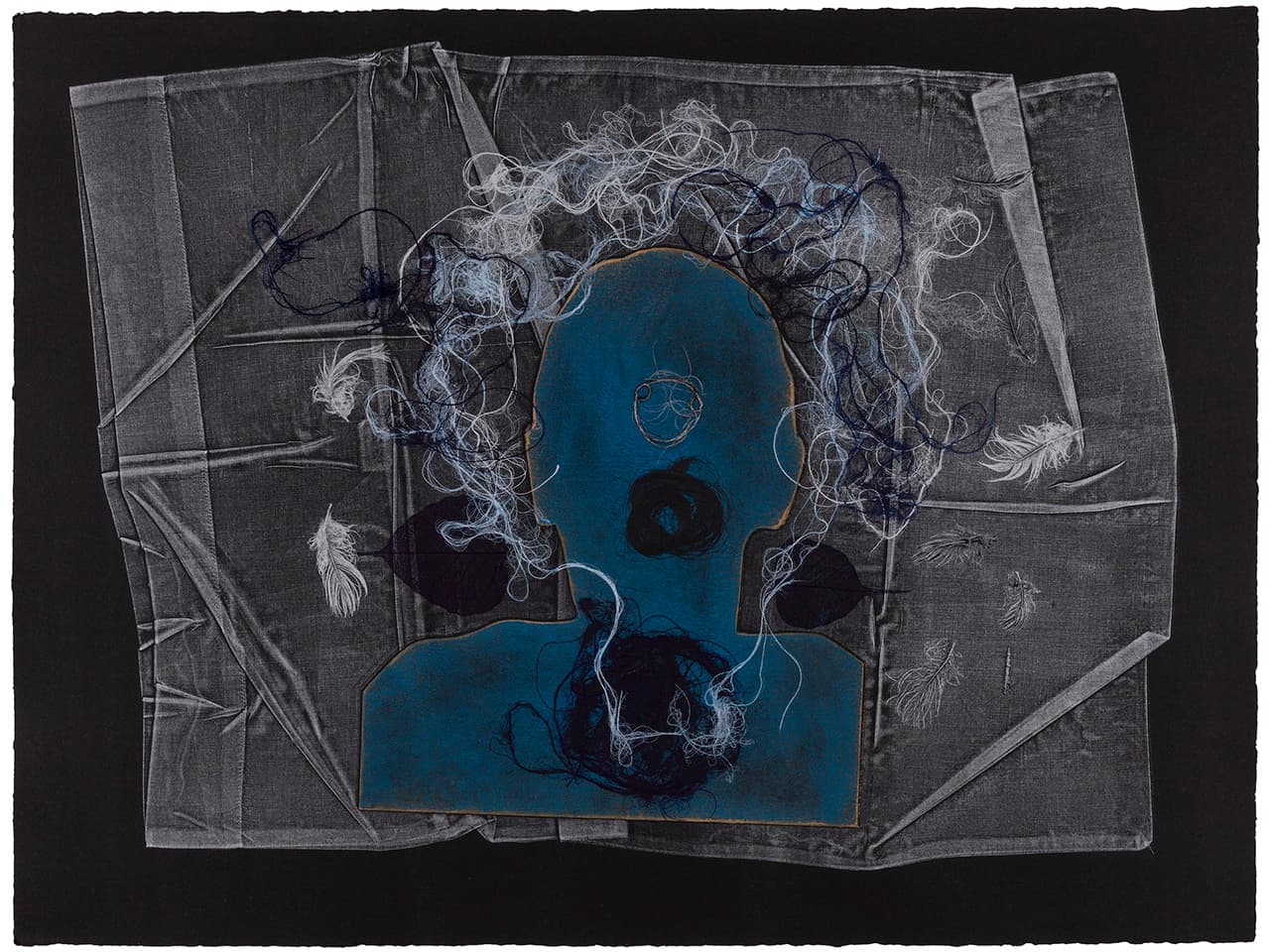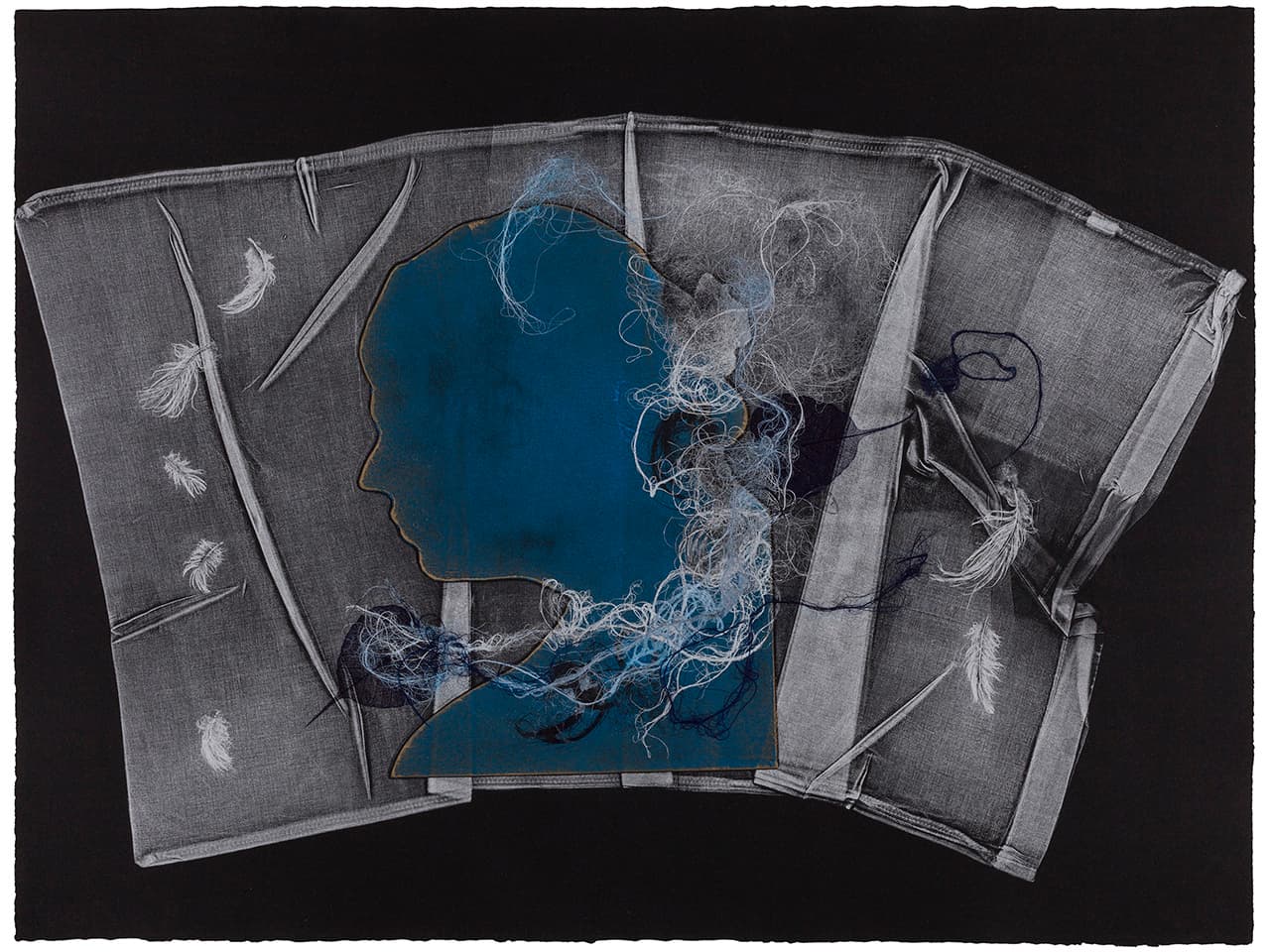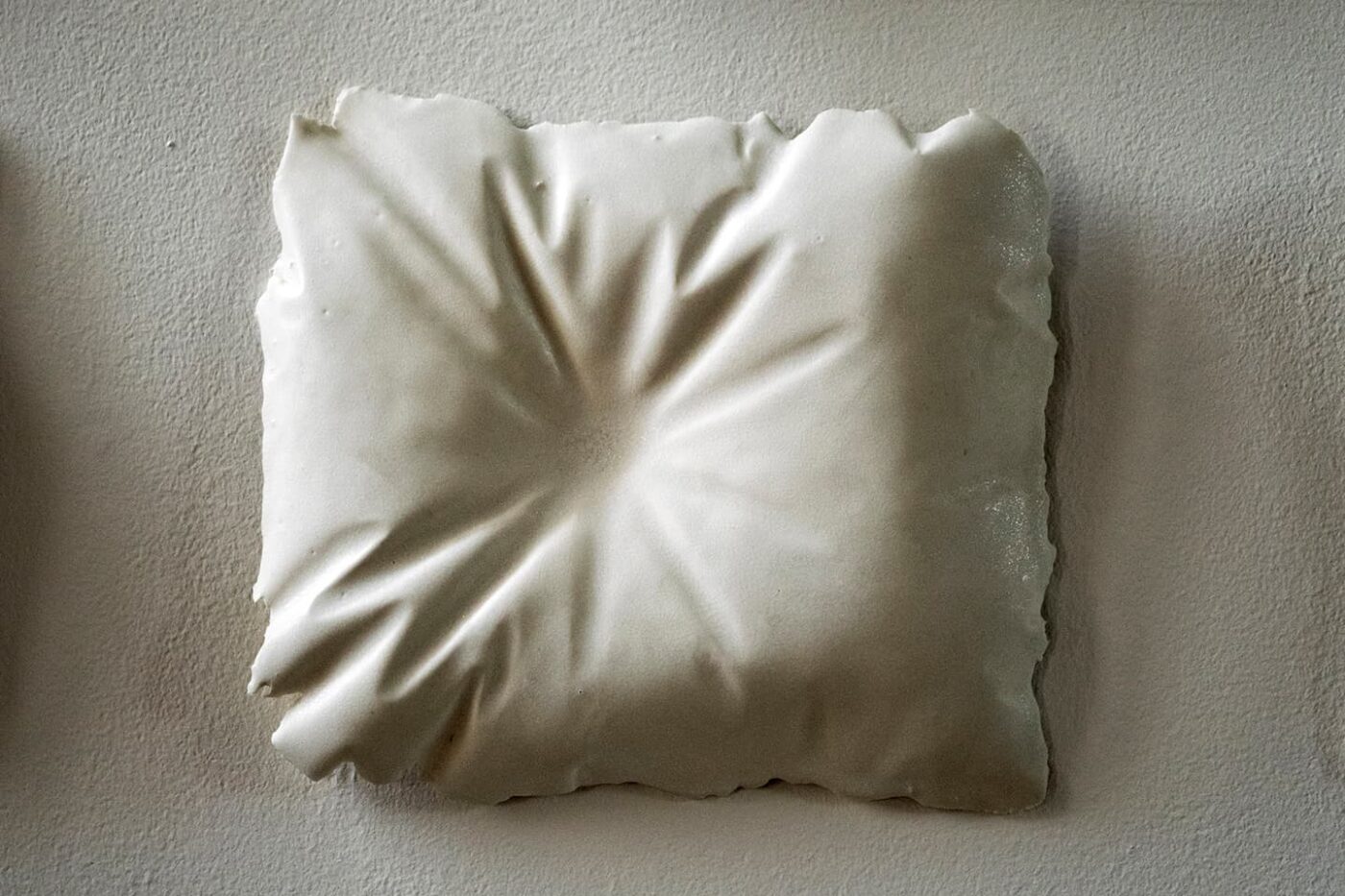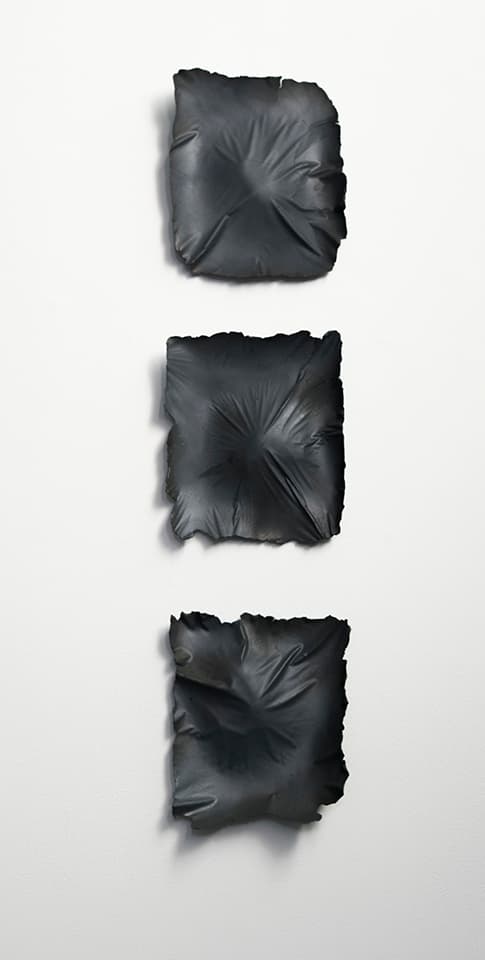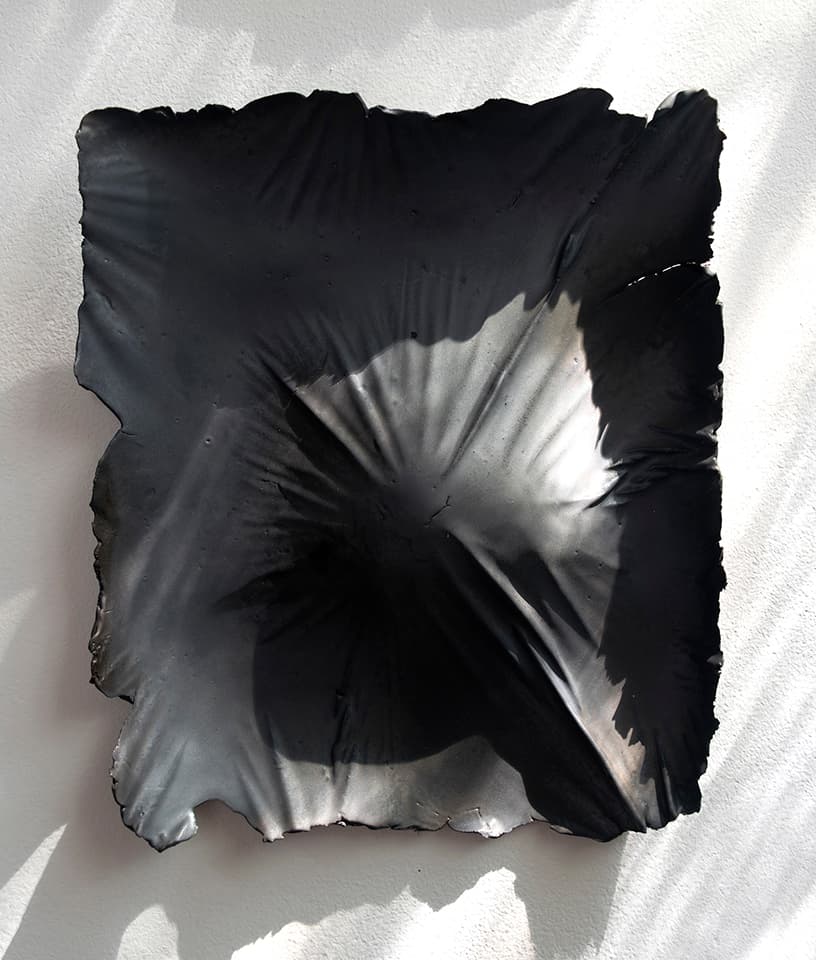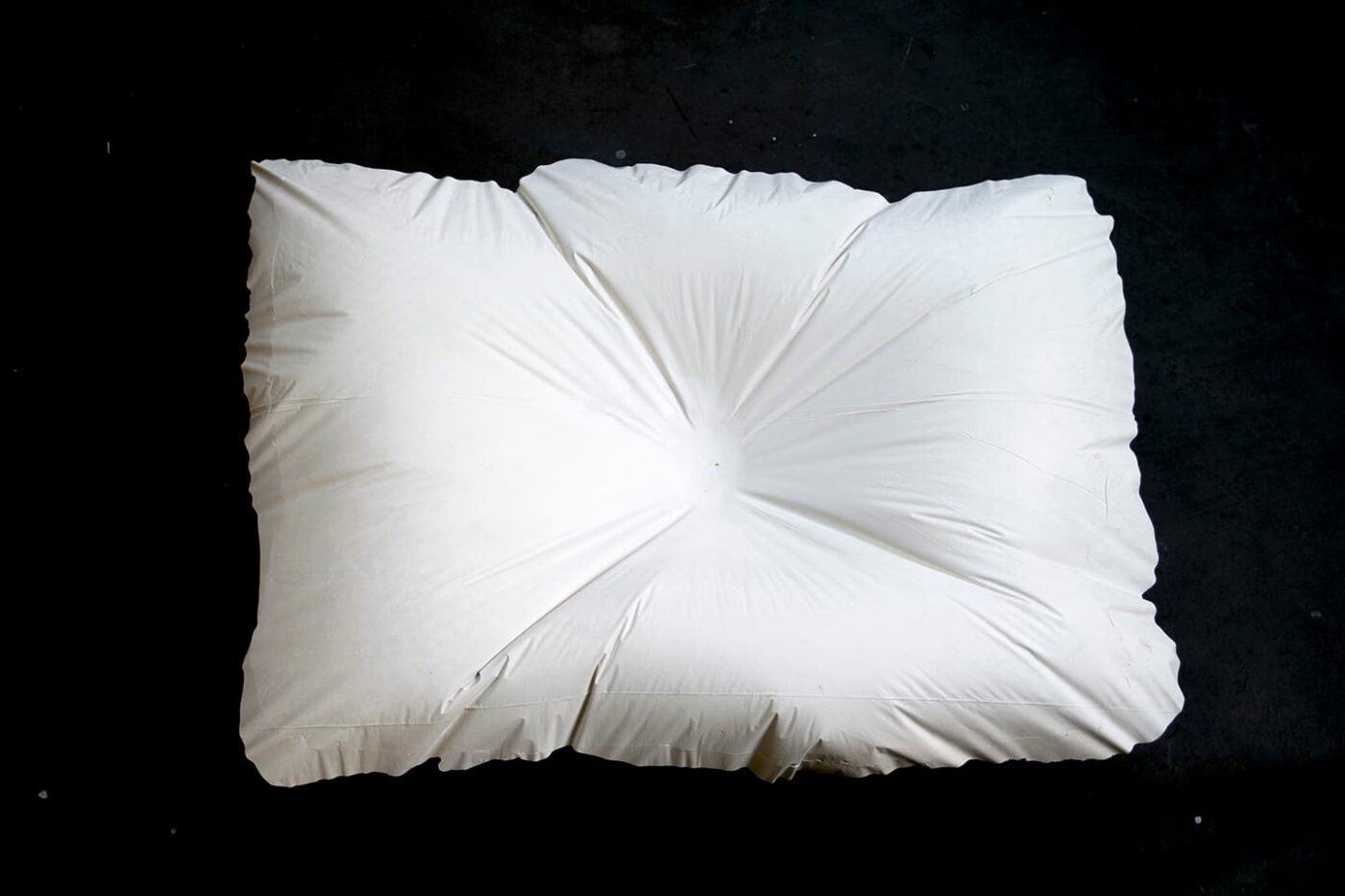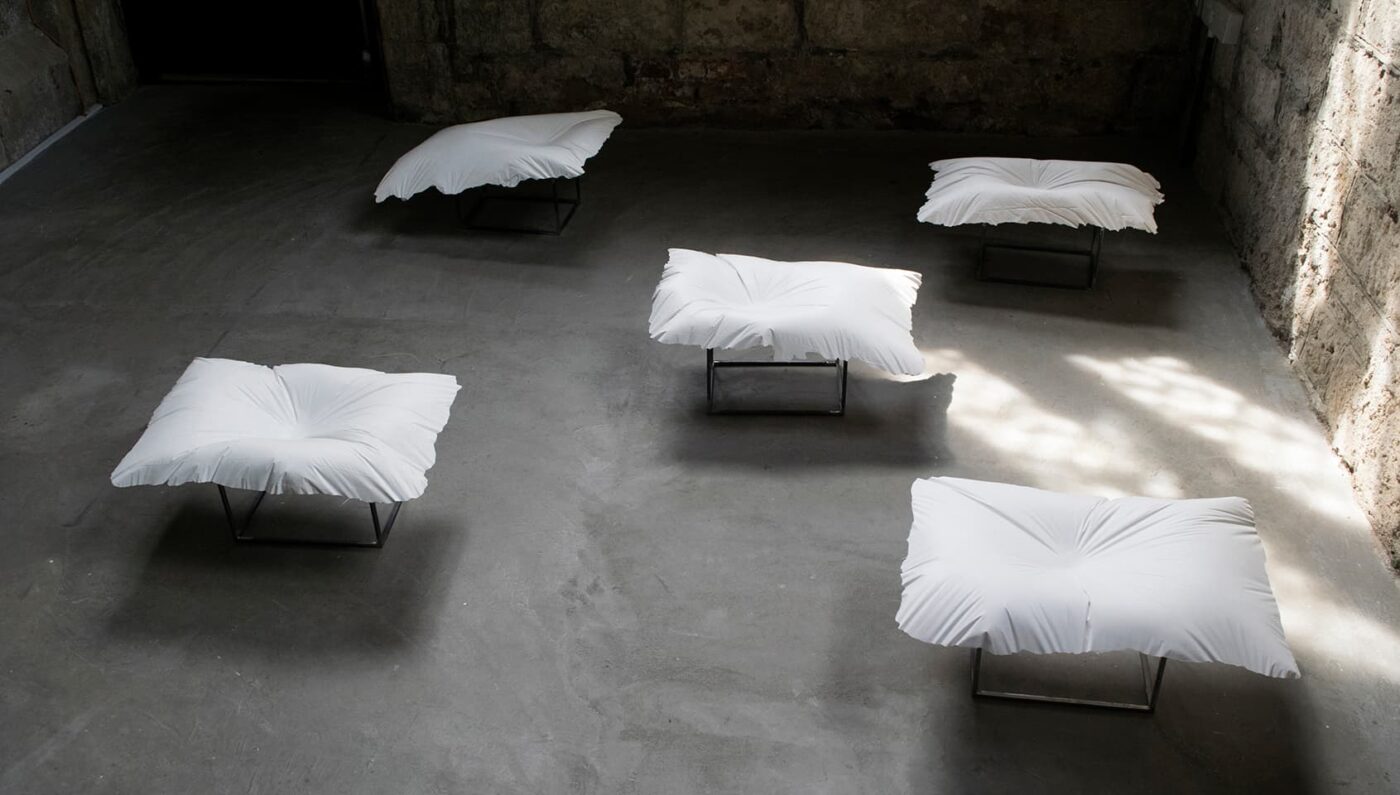The Dark Self monoprints and Evidence of Sleep sculptures
Visualising sleep
During my residency at the University of York working with neuroscientist Professor Miles Whittington researching into brain function during deep sleep, I became fascinated by a philosophical conundrum I called The Dark Self – if our brains can make the ‘self’ unconscious during sleep, then what is the relationship between the brain and our sense of self? Sleep is an experience of nothingness but one that is full of fundamental but hidden activity. What is this transition from consciousness to unconsciousness? What can we know about it? What is it about these fundamental sleep-associated activities that are so ‘secret’ they demand that we remain unaware of them? What happens to the self in this dark time of sleep when the brain is in a state of high function? These are some of the questions that I explored during the residency.
How can we begin to describe such a fundamental part of our lives? How, indeed, do we even fall asleep and then wake up again? These works – The Dark Self – are a meditation on such questions. Intriguingly, my common motif linking all the works is not the brain, or even the human head, but the pillow on which it rests. These prints and sculptures transfigure the sense of absence in sleep into physical presence by drawing attention to its forms of materiality and embodiment. These works were first shown in The Dark Self at York St Mary’s in 2017.
You cannot will your self to sleep, you have to fall asleep.
A portal opens in the middle of the pillow through which the sleeper passes into unconsciousness.
